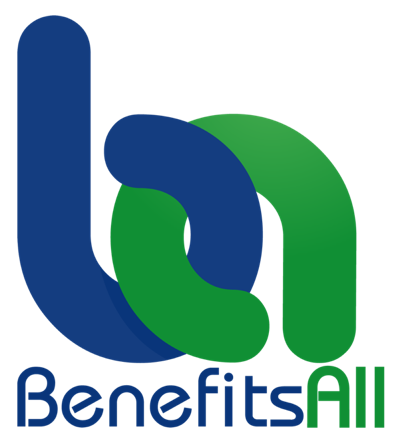Tax-Favored Benefits
BenefitsAll

The Affordable Care Act will provide tax subsidies to low income earners who purchase insurance on the exchanges. But the average person, who purchases health insurance on an exchange or from an insurer, is not eligible for a premium tax subsidy. They also cannot pay health insurance premiums with pre-tax dollars.
- TF Benefits Basics
- TF Benefits Plans
- TF Benefits & PPACA & Tax Reform
- Savings Calculators
- tab 5
- tab 6
- tab 7
- tab 8
- tab 9
- tab 10
- tab 11
- tab 12
- tab 13
- tab 14
- tab 15
- tab 16
- tab 17
- tab 18
- tab 19
- tab 20
Tax-Favored Benefits is a simple concept made confusing by the terminology used to explain it. To appreciate what these benefits mean to your finances you need to understand some basic tax terms.
Four terms to know when discussing the tax treatment of benefits: pre-tax, tax-free, tax deferred, and after-tax. It is also important to know if the favorable tax treatment applies to plan contributions, earnings, or both.
Tax Terminology Used for Benefit Plans:
Pre-Tax - income you receive that you have not paid income tax or FICA tax on. Pre-tax benefits are benefits that are purchased with income that you have not paid income tax on. Depending on the type of benefit plan, you may pay tax on what you contribute at a later date.
Tax-Free - income you receive that you never pay federal income or FICA tax on. Most employer-sponsored health plans that are part of a qualified cafeteria plan are tax-free. With these plans, contributions you make to the plan are never subject to federal and most state income tax or FICA taxes
Tax-Deferred - earnings on contributions to a benefit plan that are not taxed until they are withdrawn. Most employer-sponsored retirement plans (traditional 401(k), 403(b), 457(b)) have a tax-deferred feature. Withdrawals from Roth 401(k), Roth 403(b), and Roth 457(b) accounts are tax-free, not tax deferred (see "After-Tax")
After-Tax - income you have paid income taxes on. With the Roth 401(k), Roth 403(b), and Roth 457(b), your contributions are with after-tax money and you may be able to withdraw your earnings from these accounts tax-free
Four terms to know when discussing the tax treatment of benefits: pre-tax, tax-free, tax deferred, and after-tax. It is also important to know if the favorable tax treatment applies to plan contributions, earnings, or both.
Tax Terminology Used for Benefit Plans:
Pre-Tax - income you receive that you have not paid income tax or FICA tax on. Pre-tax benefits are benefits that are purchased with income that you have not paid income tax on. Depending on the type of benefit plan, you may pay tax on what you contribute at a later date.
Tax-Free - income you receive that you never pay federal income or FICA tax on. Most employer-sponsored health plans that are part of a qualified cafeteria plan are tax-free. With these plans, contributions you make to the plan are never subject to federal and most state income tax or FICA taxes
Tax-Deferred - earnings on contributions to a benefit plan that are not taxed until they are withdrawn. Most employer-sponsored retirement plans (traditional 401(k), 403(b), 457(b)) have a tax-deferred feature. Withdrawals from Roth 401(k), Roth 403(b), and Roth 457(b) accounts are tax-free, not tax deferred (see "After-Tax")
After-Tax - income you have paid income taxes on. With the Roth 401(k), Roth 403(b), and Roth 457(b), your contributions are with after-tax money and you may be able to withdraw your earnings from these accounts tax-free
Qualified Plan
Put plainly, a qualified plan means that a health or retirement benefits plan meets the specific requirements of sections of the Internal Revenue Code (IRC) to qualify for favorable tax treatment.
Some tax-favored plans allow you to purchase medical, dental or vision coverage with tax-free income. Other plans allow you to contribute tax-free income to an account to help pay for health or child/elder care services. And some allow you to make pre-tax or after-tax contributions that grow tax-deferred.
Bottom line--participation in any of these tax-favored, employer-sponsored plans results in hundreds or thousands of dollars in annual savings to you. Money that is available to you now.
Health Care Reform
PPACA stands for Patient Protection and Affordable Care Act. It is more widely known as the Affordable Care Act (ACA) or Obamacare.
Any adult may purchase health insurance through one of the state exchanges/marketplace during the open enrollment season that starts October 1, 2013. Coverage will be effective on January 1, 2014.
Employees may opt out of their employer coverage and purchase individual health insurance coverage; however, there are several downsides to doing this.
Tax Reform
Legal measures and proposals to limit or expand tax-favored benefits plans:
Tax-favored benefits plans allow you to save money on items you need (health insurance, medical, dental and vision care) and want (education and retirement savings). To determine the approximate amount of these savings you can use a tax savings or payroll calculator. There are dozens of calculators to choose from. Some calculators are more complex, requiring more data, while others are much simpler. The more data you input and the more precise the data is, the more accurate your savings estimate.
Calculator 2
Calculator 3
Calculator 4
Calculator 5
Calculator 6Use our Pre-Tax Calculator Decoder for an explanation of the commonly used calculator input fields...
Use our Effective Tax Rate Calculator to calculate your actual federal income tax rate...
Online Tax-Favored Savings Calculators
Calculator 1Calculator 2
Calculator 3
Calculator 4
Calculator 5
Calculator 6Use our Pre-Tax Calculator Decoder for an explanation of the commonly used calculator input fields...
Use our Effective Tax Rate Calculator to calculate your actual federal income tax rate...
This tool is not intended to provide tax or legal advice. You should consult with a tax or legal professional for specific advice on all tax and legal matters.
